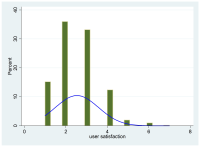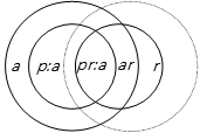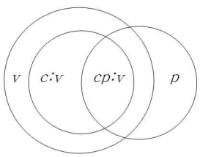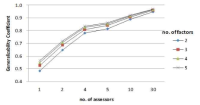The purpose of this study was to analyze the differences among behavioral skills of goalkeeper of K-League and national team and the differences among behavioral skills of goalkeeper according to game the result of match. 5 games of K-League Classic and 10 A matches of the national team in 2013 were analyzed by using Soccer Data Analysis Program and ‘Evermedia HD Capture Station’, which is an HD capture equipment with excellent functions of editing and storage of high-definition video. For statistical analysis process, SPSS Version 21.0 was used to conduct t-test and ANOVA. The results of analysis were as follows: First, the differences among behavioral skills of goalkeeper of K-League and national team were higher in the order of catching factor, kick factor, strategy factor, punching factor. The differences among the specific sub-factors of behavioral skills factors was the highest in crossing catching to be followed by cross punching. And goalkeepers of K-League were higher than those of the national team. In back pass kick factor in kick factor and build-up factor in strategy factor, goalkeepers of the national team were higher than those of K-League. In kick factor, there were significant differences in goal kick (out of play), back pass kick (in play), cross punching, and build-up factors. Second, as for behavioral skills factors of goalkeeper according to the result of match, there were significant differences in catching factor, punching factor, and strategy factor; there were no significant differences in ground kick factor among kick factors; there were significant differences in factors of goal kick, volley kick, and free kick.
PURPOSE This study aimed to identify the factors influencing the success of the sports entertainment program “A Clean Sweep” using big data analysis. METHODS Text mining, sentiment analysis, TF-IDF, connection centrality, and semantic network analysis were conducted using the social big data analysis program Textom and social network analysis program Ucinet6. The research period was limited from June 6, 2022 to November 30, 2023. RESULTS The factors determining success were entertainment programs, Monday, OTT, and independent league. The events and marketing factors were extracted, and A Clean Sweep X Kelly, A Clean Sweep X Mom love, cheering song, uniforms, and direct viewing day influenced success. The new hire factors were rookie draft, Young-Mook Hwang, Sung-Joon Won, and Hyun-Soo Jeong. Positive (such as good, fun, looking forward to, best, and funny) and negative (such as esoteric, regrettable, shocking, dislike, and uncomfortable) emotional factors were also extracted. The extracted star marketing factors were directors (Seung-Yup Lee, Sung-Geun Kim) and players (Dae-Ho Lee, Geun-Woo Jung, Hee-Kwan Yoo, Moon-Ho Kim, Yong-Taek Park, Taek-Geun Lee). CONCLUSIONS We were able to identify the success factors of “A Clean Sweep”, which we hope will contribute to the revitalization of professional baseball as well as sports entertainment programs.
PURPOSE This study aimed to analyze factors associated with physical activity (PA) in older adults based on social ecological theory. METHODS Secondary analysis was conducted using raw data from the 2021 Community Health Survey. after excluding 129 non-responses in the PA domain, a total of 74,363 individuals were included in the final analysis. A total of eight factors, including personal (level of depression, history of falls), relational (relationships with neighbors, living alone), community (satisfaction with the local community system, safety), and environmental factors (living environment, natural environment), were selected in accordance with the key points of social ecological theory. To analyze social ecological factors related to the PA of older adults, we conducted a decision tree analysis using Chi-square automatic interaction detection (CHAID). RESULTS The average PA level among older adults was approximately 136 minutes, but the mode and median were both 0 minutes. A total of 20.2% of older adults met the physical activity recommendations, while 79.8% did not. According to the first split of the decision tree, living alone was the most relevant factor associated with the PA of older adults, followed by depression and falls. Older adults living alone, with a depression score of 10 or higher, and who had experienced a fall within the past year, were least likely to meet the PA recommendations. CONCLUSIONS This study urgently suggests that PA programs should target older adults living alone, experiencing depression, and falls.
PURPOSE The purpose of this study is to analyze the biomechanical variables involved in ballet dancers’ ankle muscle imbalance when performing relevé movements. METHODS The subjects of this study (n=14, age: 22.29±1.73 years old, height: 161.4±5.06cm, weight: 51.88±7.51kg) were 14 ballet dancers with 9 years of experience. Based on the reciprocal muscle strength ratio, the dancers were divided into the following groups: Close to the normal value (RMIS) and far from the normal value (RMIB) using the maximum values of plantar flexion and dorsiflexion of the ankle joint using an isokinetic measurement equipment (60°/sec). RMIB). The biomechanical variables, namely the ankle joint movement and ground reaction force, were subsequently measured. SPSS 26.0 was used for data analysis and independent t-test was used for statistical verification. RESULTS The ground reaction force in the Z (vertical) direction based on the ankle joint muscle strength imbalance of ballet dancers was significantly lower in the RMIB group. In addition, although it was not a statistically significant difference, the plantar flexion movement was lower in the RMIB group, and there was a significant difference in the generation of ankle joint movement in the Z direction. CONCLUSIONS In conclusion, in order for a ballet dancer to efficiently utilize the force generated from the supporting leg when performing a movement, ankle imbalance must be taken into consideration when training.

[Purpose] The present research aims to provide fundamental material required for establishing effective marketing strategies by analyzing purchasing experience of sports and art collaboration products and the determinants of purchasing intention. [Methods] Total of 370 survey questionnaires were distributed to undergraduate and graduate students in Seoul and Gyeonggi area and 331 questionnaires were analyzed as the final valid samples. For the data analysis, SPSS 18.0 version was used for frequency analysis, descriptive statistics analysis, exploratory factor analysis, reliability analysis, cross analysis, and logistics regression analysis. [Results] The study results are as follows. First, as a result of cross analysis on general characteristics, there was significant difference in age, monthly income and allowance, number of average purchases, considerations and major. Second, as a result of cross analysis on purchasing intention, there was significant difference in gender, monthly income and allowance, number of average purchases, considerations and major. Third, as a result of analyzing determinants of purchasing intention, there was significant difference in monthly income and allowance, number of average purchases, and sincerity. Fourth, as a result of analyzing determinants of purchasing intention, there was significant difference in gender, number of average purchases, considerations, major, creativity, aesthetics, interest and tenacity.


Purpose The study aims to analyze the factors affecting the Residents user satisfaction in order to improve the management of the Open School Sports Center the support facility of the National Sports Promotion Fund. Methods This data is based on Korea Institute of Sports Science(KISS)'s Open School Sports Center Usage Status and Satisfaction Survey (2016) and Open School Sports Center use performance. The analysis model is a regression model (TOBIT) that takes into account the limited characteristics of dependent variables. Results The results are as follows: the satisfaction is negatively related age, number of regulations, weekday opening hours, and usage fees. Conclusion Therefore, in order to increase the satisfaction of Open School Sports Center residents users, various supports are needed. This includes funds for PR, discounts and user-friendliness. It also requires differentiated management of each Center. In the case of regions and facilities, consumer-oriented policies need to be applied instead of collective standards.


Purpose The purpose of this study was (1) to analyze judges’ evaluation on rhythmic gymnastics performance by applying generalizability theory and (2) to suggest recommendations to improve judges' rating. Methods Data were 34 players’ scores from Senior Part at 29th KGA President’s Cup National Rhythmic Gymnastics Championship in Korea. Difficulty and execution scores in ball, clubs, hoop and ribbon event were analyzed. Analysis models containing components of area and reputation rank were designed and multivariate generalizability theory were used for analysis. Results The G-study results showed (1) that the error source about players has more significant impact to evaluation than other error sources in analysis model containing components of only player and judge, (2) that the error source about players has more significant impact to evaluation than other error sources in analysis model adding components of area, but the error source about area has more significant impact to evaluation of clubs event than other error sources, (3) that the error source about players has more significant impact to evaluation than other error sources in analysis model adding components of reputation rank, but the error source about reputation rank has more significant impact to evaluation of hoop event than other error sources in analysis model adding components of area. The D-study results showed generalizability coefficient was stable in analysis model without components of area and reputation rank, but generalizability coefficient in analysis model containing components of area and reputation rank not stable in some event. Conclusion Recommendations for improving judging were discussed.



The aim of this study was to evaluate gender differences of expert and non-expert in match playing time, moving distance, energy consumption and heart rate (average, maximal) during 16 simulated badminton matches in male (n = 16) and female (n = 16) national elite players. The players had perform three sets on same day, and this time observed the playing time, moving distance, energy consumption and heart rate (resting, average, maximal) level during badminton match. Analyses of variance with repeated measures were used to test any significant time×group interaction effects on the measured variables. Statistical significances were tested at p = 0.05 with spss-pc (version 18.0). As a result, male's player had significantly difference between expert and non-expert in moving distance (p=.012), energy consumption (p=.003), average heart rate (p=.002) and maximum heart rate (p=.002). Female's players showed significant difference between expert and non-expert in moving distance (p=.001) and energy consumption (p=.012). In conclusion, there seemed to be an increased playing intensity (i.e., moving distance, energy consumption, average heart rate and maximum heart rate) from expert than non-expert in gender differences. These results suggest that men male's players with expert performed the game at a higher intensity than compared to non-expert, on the other hand female's player with non-expert showed that more activity and energy consumption was unclear during the game
This study aims to find the alternative to increase the participation rates of physical activities and to analyze socio-demographic factors that determine sporting participation in Korea. We estimates the sporting participation model with ʼ2012 national sport participation survey in Korea' and binary logit analysis. The results are as follows: sporting participation is positively related to gender(male), age, education level, household income, health status, leisure time in weekday, proximity to public and private sports facilities. The most significant factors influencing the raising the participation rates of physical activities factors are age and proximity to sports facilities. Therefore, to make many people to participate in sports activities, we need to supply the public sports facilities that in proximity to house and the facilities needs to be taken into participant's age such as elderly group. Also, we make effort to improve the accessibility to sports facilities of poor and unhealthy people.

The purpose of this study which is follow up study of Lee and Kim(2015b)'s was to analyse error sources and estimation of reliability in peer review of forced connection method-sportscasting by applying generalizability theory. Generalizability theory quantify error sources of the data measured under certain specific situation set by the researchers. It is an analysis method that the relative influences of each error sources taking from score is determined(G-study), and the effective measurement condition future applicable is provided(D-study). Participants were 10th high school students(N=216). Data were collected from student's peer review results and analyzed using univariate and multivariate generalizability theory. Results showed that error source for video have a more significant impact than other error sources. But the result by analyzing the gender difference was that error source for the interaction of video and participants have a more significant impact than other error source in the case of girls. Peer review used in this study showed high generalizability coefficient and even when reducing the number of video or participants it can maintain the adequate reliability. But generalizability coefficient of boys was higher than girls and specific measurement conditions leading to enhanced reliability were different when analyzing by gender difference. Also, method of analysis which cannot reflect measurement conditions properly estimates the reliability excessive. Discussions were provided in term of the relative influences of each error sources, the effective measurement condition maintaining the Generalizability coefficient of a certain level, and the comparison the Generalizability coefficient with the way of estimation traditional reliability applying univariate and multivariate Generalizability theory taking from score in peer review of forced connection method-sportscasting.



